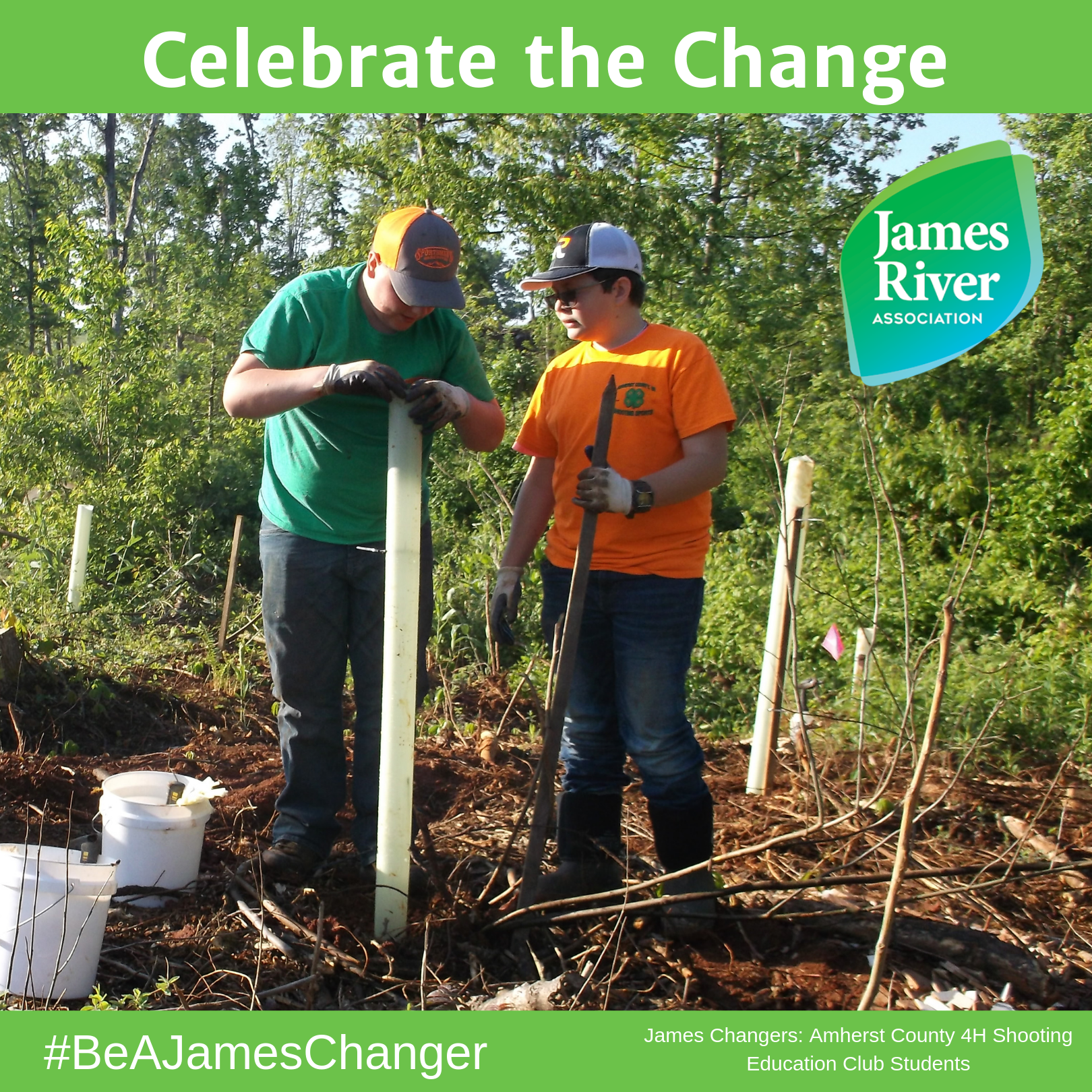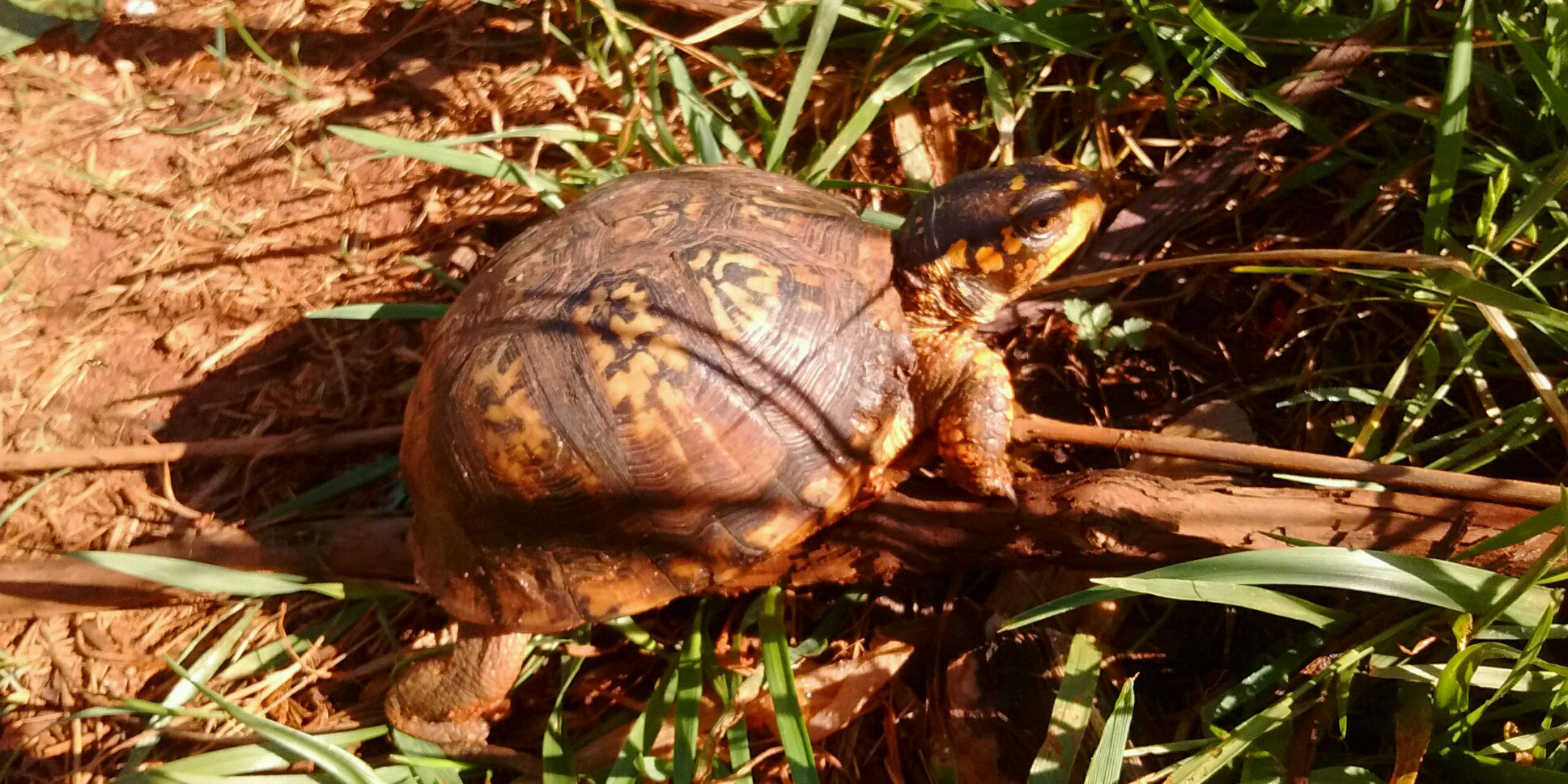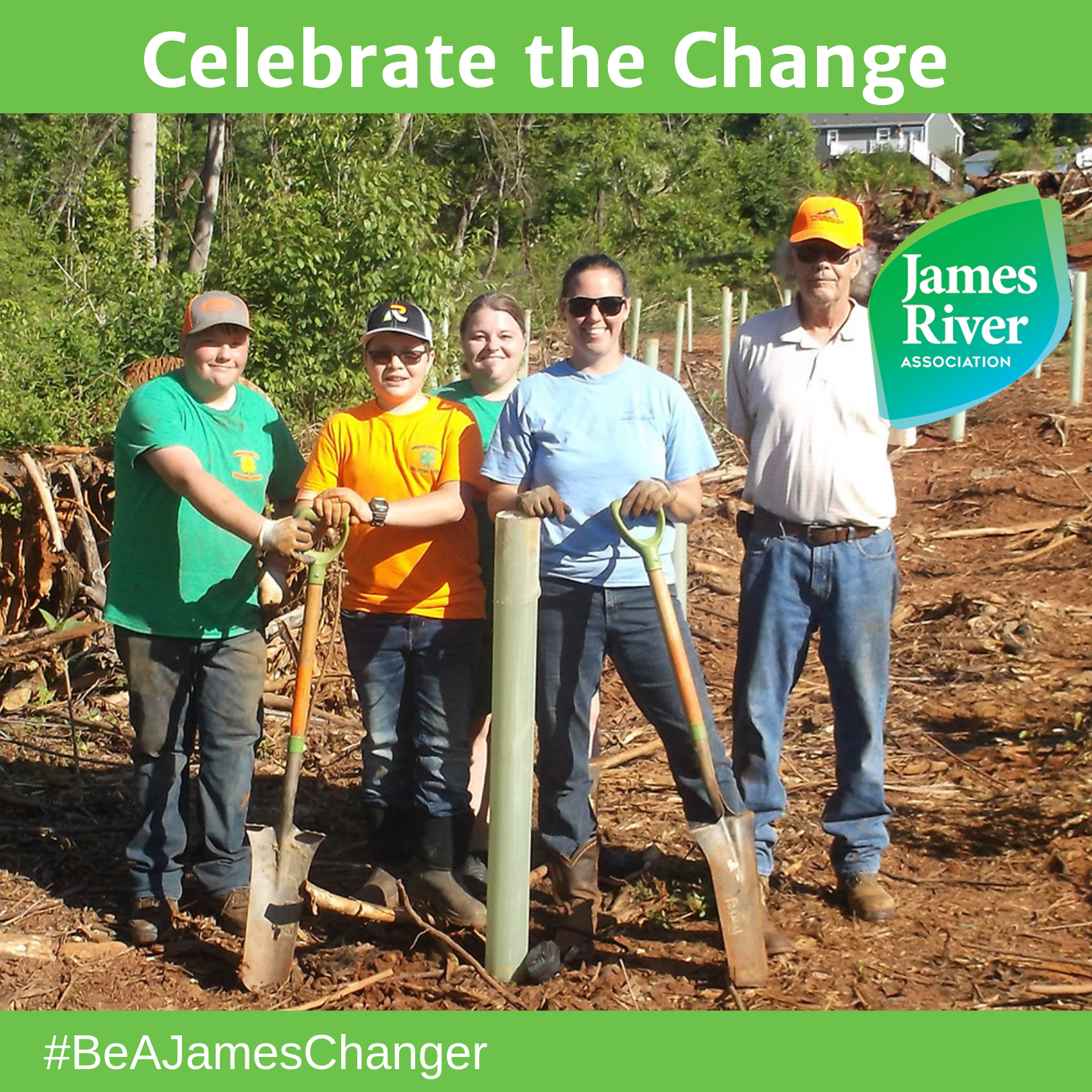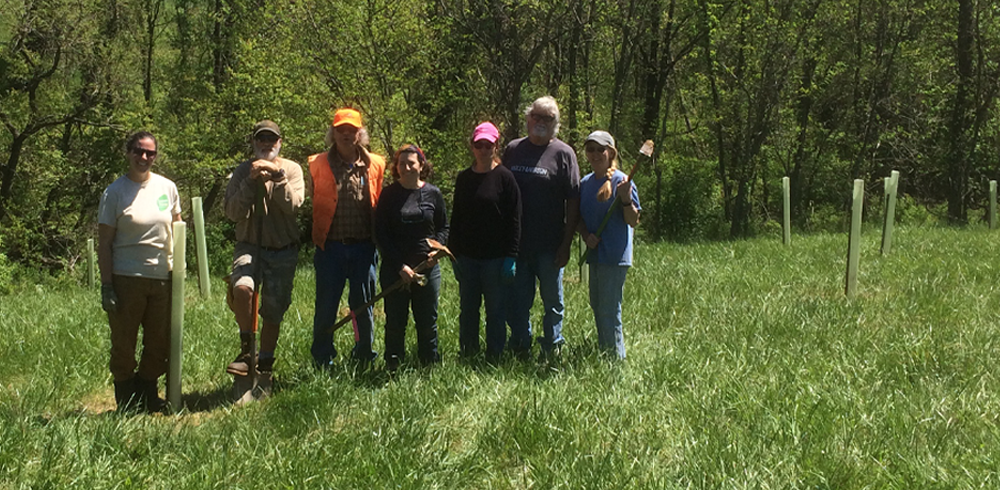What have we been doing at the James River Association? Planting trees, trees, and more trees! Our staff, along with several loyal volunteers, got their hands dirty this spring installing forested buffers in the middle James River watershed. These projects headed up by our new Middle James Restoration Manager, Anne Marie Roberts, would not have been possible without tremendous volunteer efforts and willing landowners who allowed us to install buffers along creeks and streams on their property.
“It was cool to see how you start the trees from the very beginning. These tubes remind me of planting tomatoes and putting tubes on the stems”. – Jared Moore

This spring, volunteers worked a total of 293 hours to install 12 acres of riparian buffers in Amherst, Albemarle, and Rockbridge Counties. Volunteers included Central and Blue Ridge Master Naturalists, students from Amherst County High School and Rockbridge County High School, Cadets from Virginia Military Institute, members from the local 4-H shooting education club and staff from the Virginia Department of Forestry.
In April 2018, an EF-3 tornado destroyed many homes and mature forested areas in Elon, VA. One of our planting sites was located in an area impacted by this storm. Jared Moore and Hunter Wells were two students from the Amherst 4-H Shooting Education Club who volunteered to help restore a large stream buffer area in Elon. They shared their passion for helping the Elon community restoration effort and were excited to learn more about trees and local environmental concerns.

Special thanks to funding from the National Fish and Wildlife Foundation, Chesapeake Bay Restoration Fund and the Virginia Environmental Endowment. Because of these funders, James River Association is able to install these much needed riparian buffers to improve water quality in the Middle James Watershed. The Chesapeake Bay Restoration Fund is funded by Chesapeake Bay license plate sales and is used to help fund restoration projects for the Bay and its tributaries.
“I think it’s really neat how you put bird nets on the tubes to keep the birds from falling into the tubes”. – Hunter Wells
Riparian Buffers
Riparian buffers are one of the most beneficial and cost-effective practices that can be used to improve water quality. According to the 2017 State of the James Report, only 32% of the James River TMDL (Total Maximum Daily Load) goal to restore 60,000 acres of riparian buffers had been achieved. A riparian buffer is an area along a stream, river, or shoreline that contains a mix of trees, shrubs, and other vegetation. These buffers help to control bank erosion and sediment discharge, filter pollutants and absorb nutrients from runoff or subsurface flows and reduce the impact of flooding through temporary storage, and slower releases from heavy rains. Buffers also help local wildlife, providing organic material as food or habitat for fish, invertebrates, amphibians and even birds, and also creates shade to maintain cooler water temperature for fish.

We believe that if you change the James, the James will change you. It is an honor to work with so many James Changers in our community who share our passion for restoring the river to full health.
Interested in volunteering and becoming a James Changer? Sign up to receive our volunteer opportunities, or check out our calendar for upcoming events.

